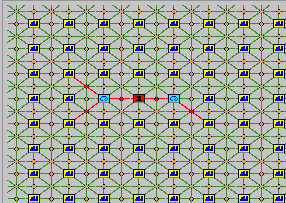Human Knowledge to Knowledge Systems
...applying a node-based approach
This analysis relates to the concept commonly known as “knowledge transfer” within the corporate world. It is also applicable to collaborative distance learning.
A Knowledge Worker as a “Node”
If a knowledge worker is just one node of a network, then logically, the knowledge context would be incomplete without reference to other nodes within the knowledge network. In fact, most structural models of knowledge management require the context of the knowledge being stored. One such model is provided by Nemeth 1

Figure 1: Node-based visualization of a knowledge repository
As such, it can be argued that a direct transfer of knowledge from the "node" worker to the learner will not be entirely accurate as the context is not known or the context is not contextualized as part of a knowledge classification or hierarchy. This is where the knowledge repository or knowledge system comes in.
The Knowledge Repository
The worker “node” is requested to deposit their knowledge into the knowledge repository. During this process, the knowledge is converted into information 2 and stored into contexts defined by other “nodes” in the knowledge network.
The learner then references this repository of information when being “instructed" by the worker during the knowledge transfer.

Figure 2: knowledge transfer through a knowledge repository
Transfer through Distance Learning
Some type of synchronous communication channel has to be opened up between the learner and the “worker” node. I exclude asynchronous communications because the knowledge repository is already an asynchronous intermediary. Value can be added to the knowledge transfer if the “worker” walks the learner through the knowledge within the domain context that is being discussed.
This synchronous communication can be through an audio link, video link, or online text or multimedia chat. Preferably, the worker should first pass a context and summary of the knowledge to the learner.
An Example of Such Transfer
An example of this is a distance education lecture, or something similar. The lecturer is a researcher in a certain field whose work is tied into a knowledge network of research and research papers. The lecture will most probably be over a video or audio link. The paper would already have been circulated, and it would definitely reference other research papers. As a result of the lecture, knowledge transfer over long distance would have occurred.
In this example:
Researcher: worker “node”
Learner: audience of peers
Repository: body of research in that field
Distance Technology: Tele-conference or video-conference.
It is easy to see that asynchronous communication in this example would not add any value.